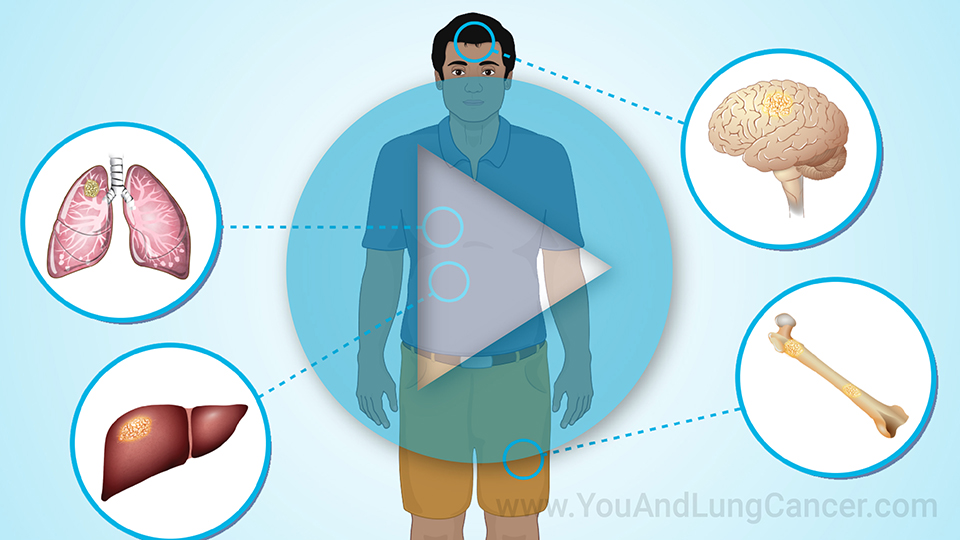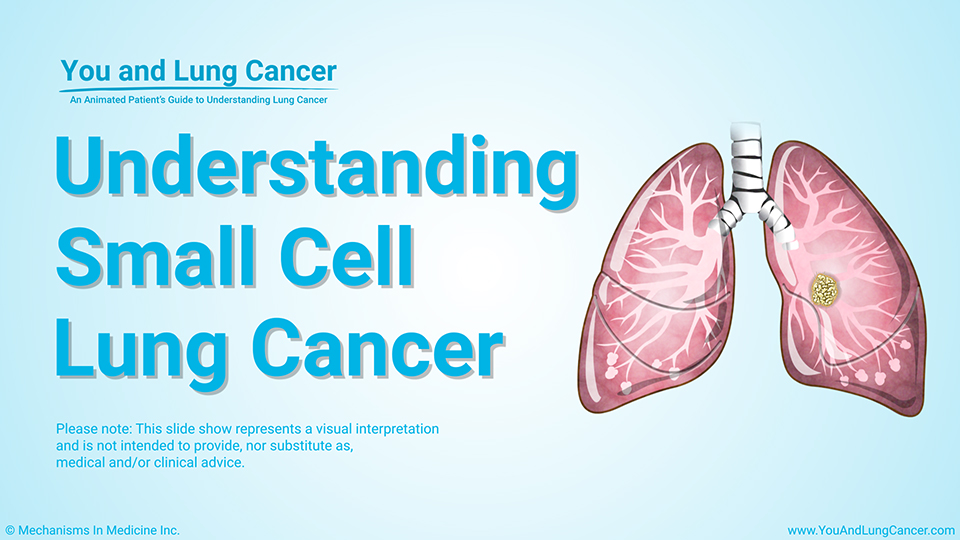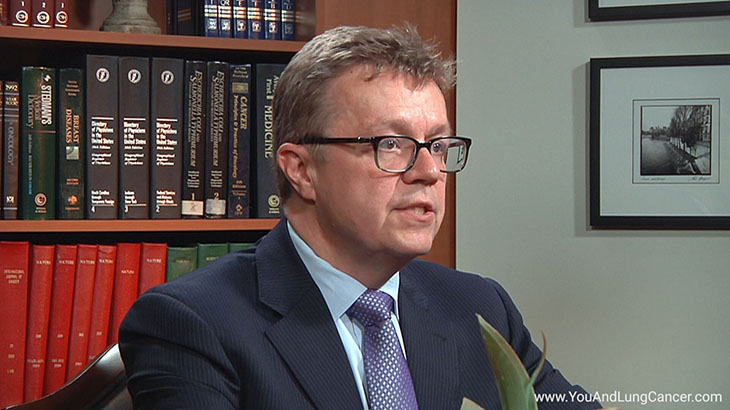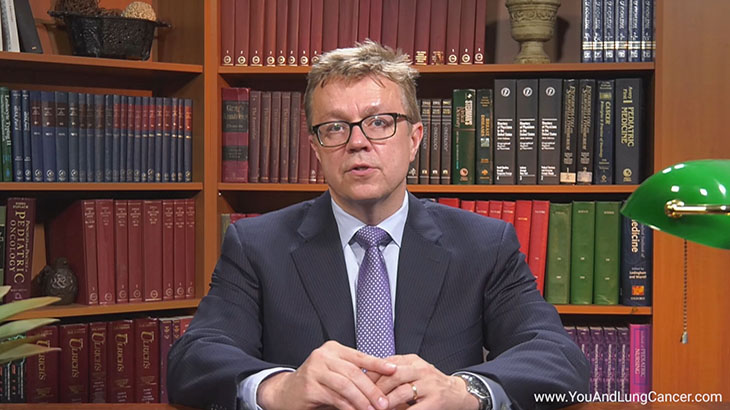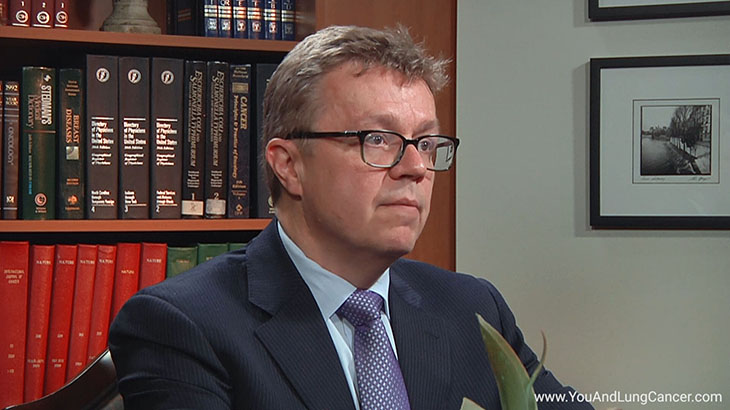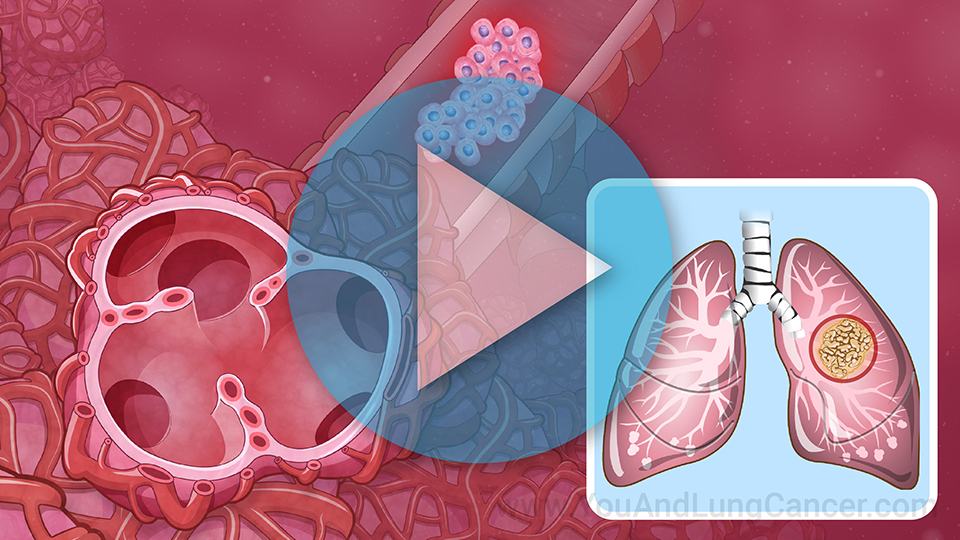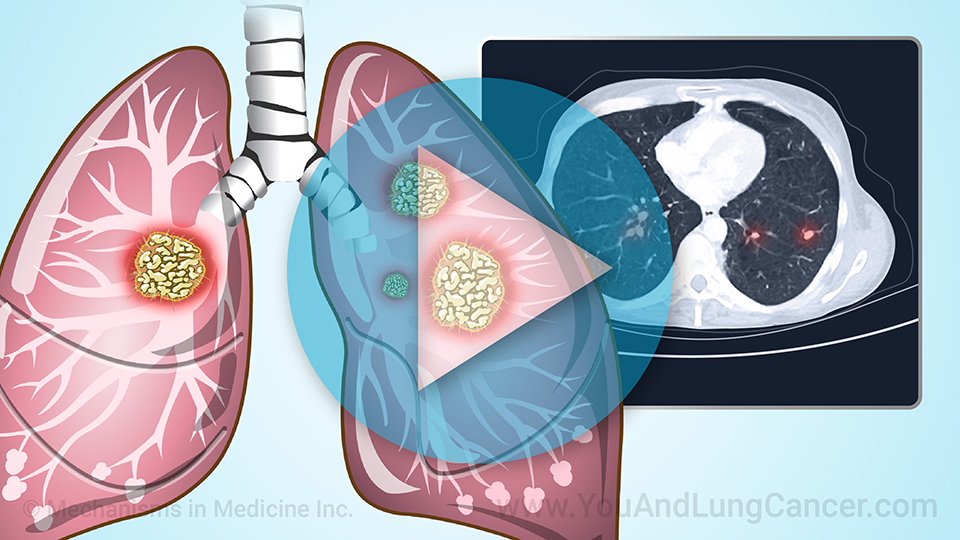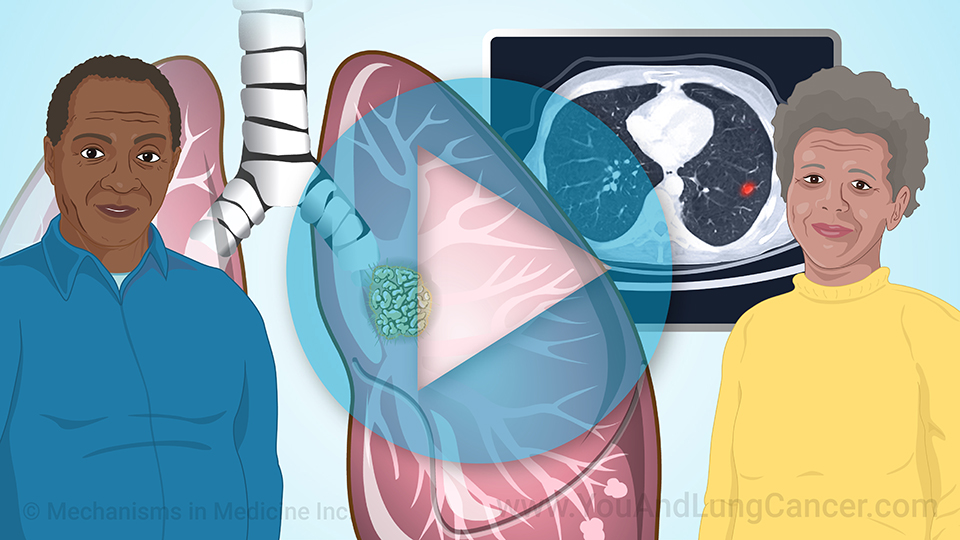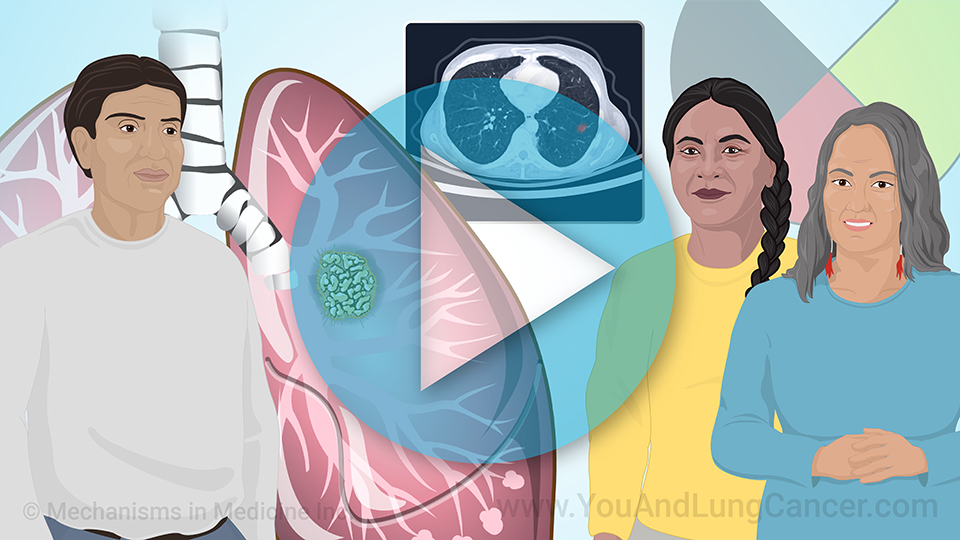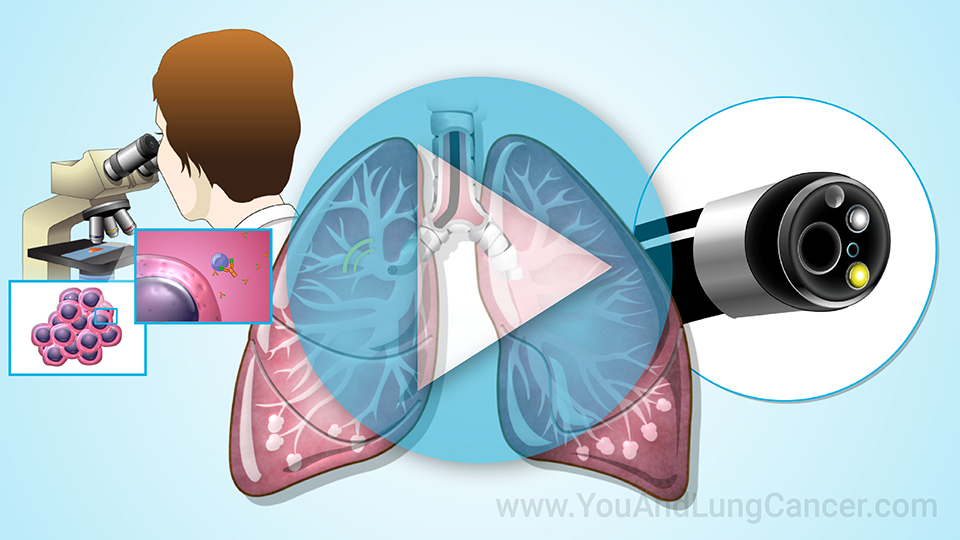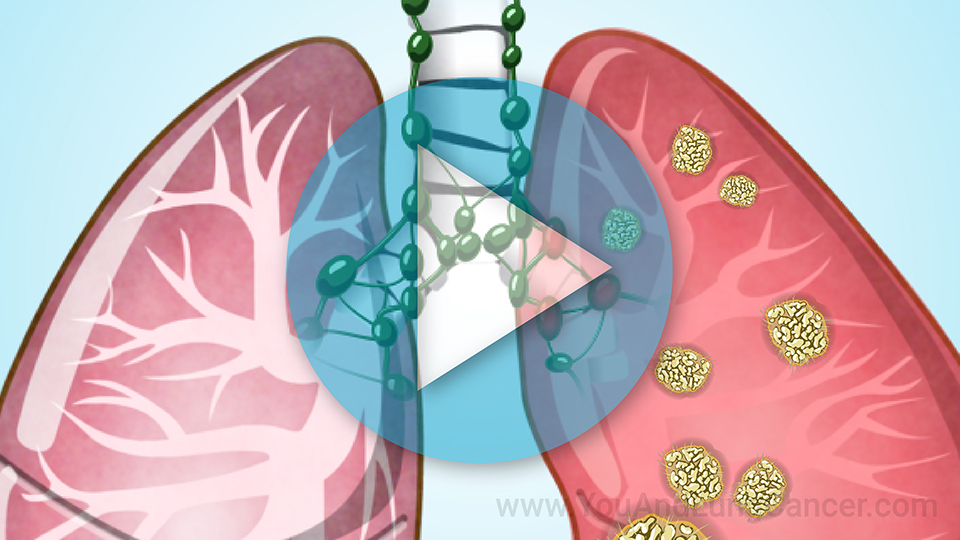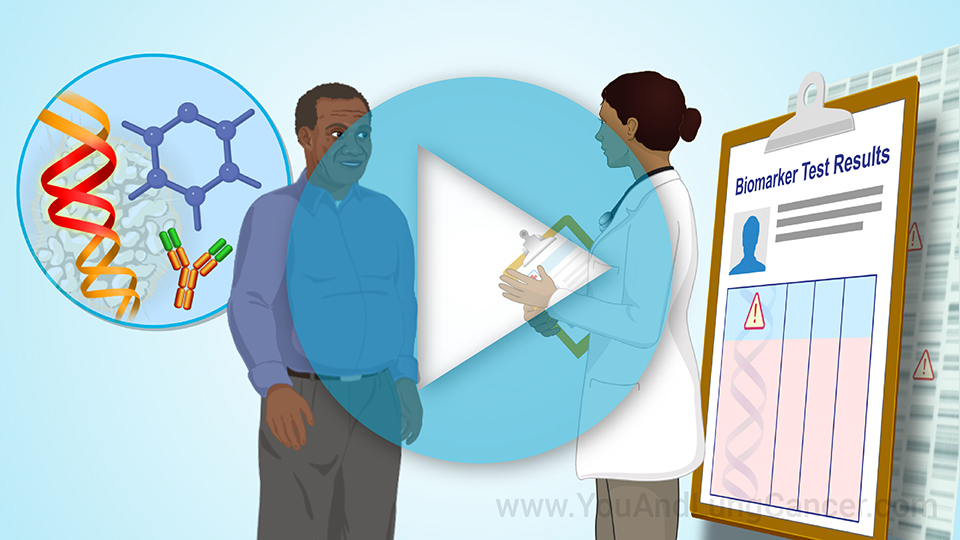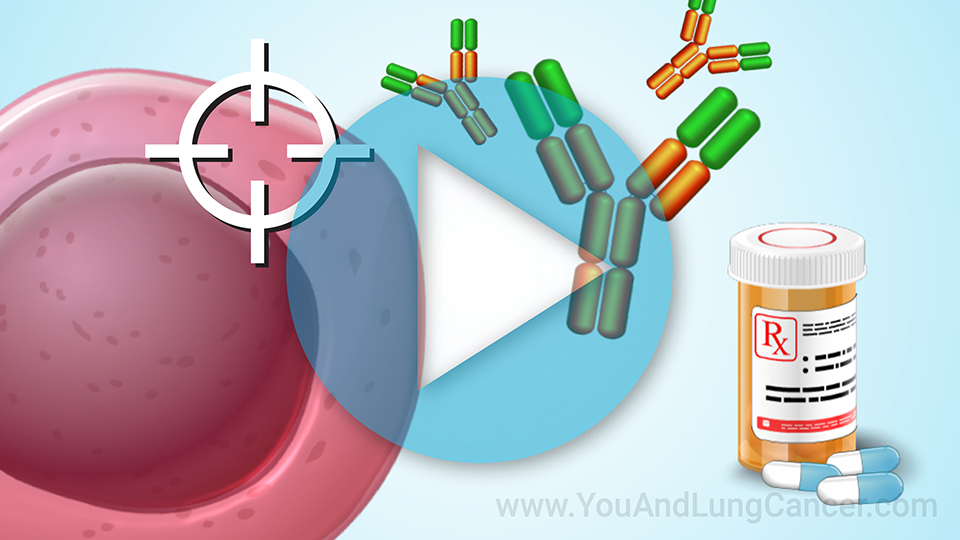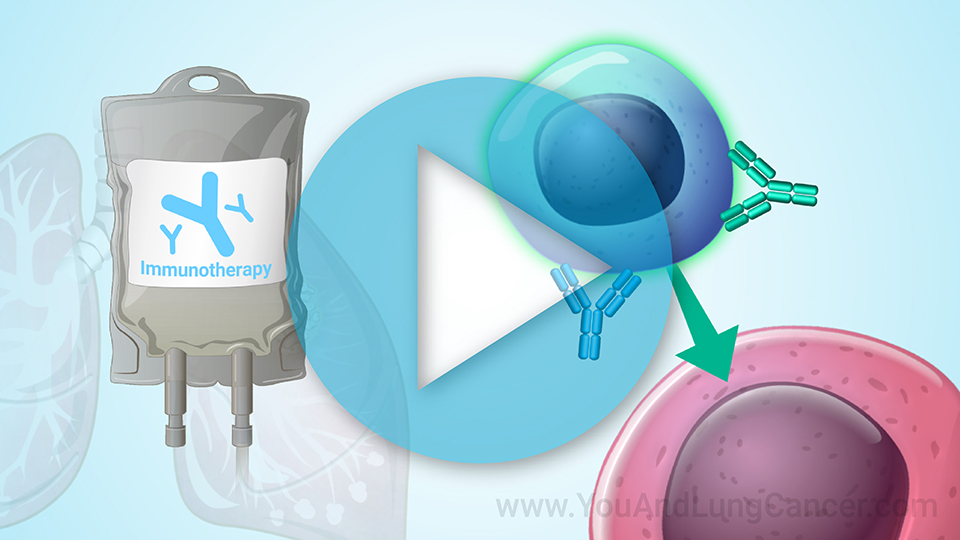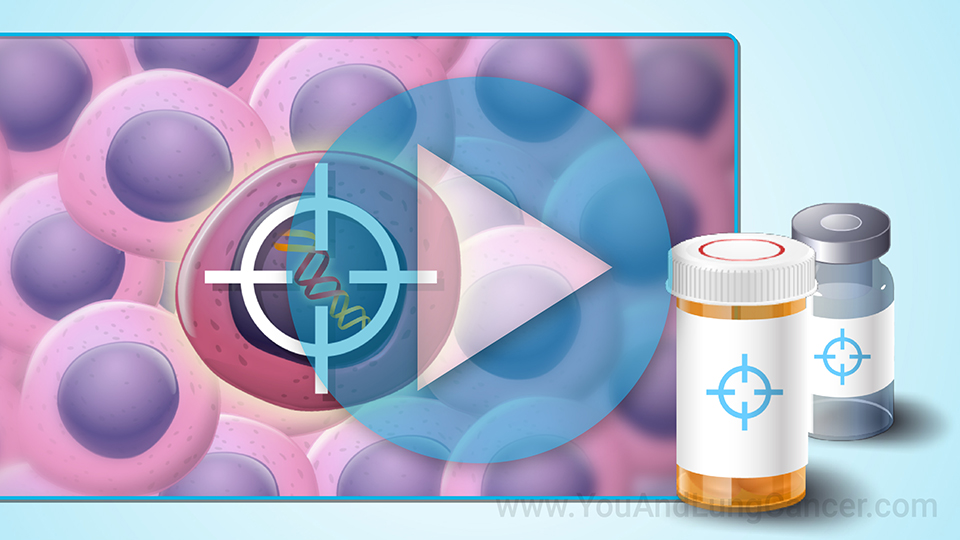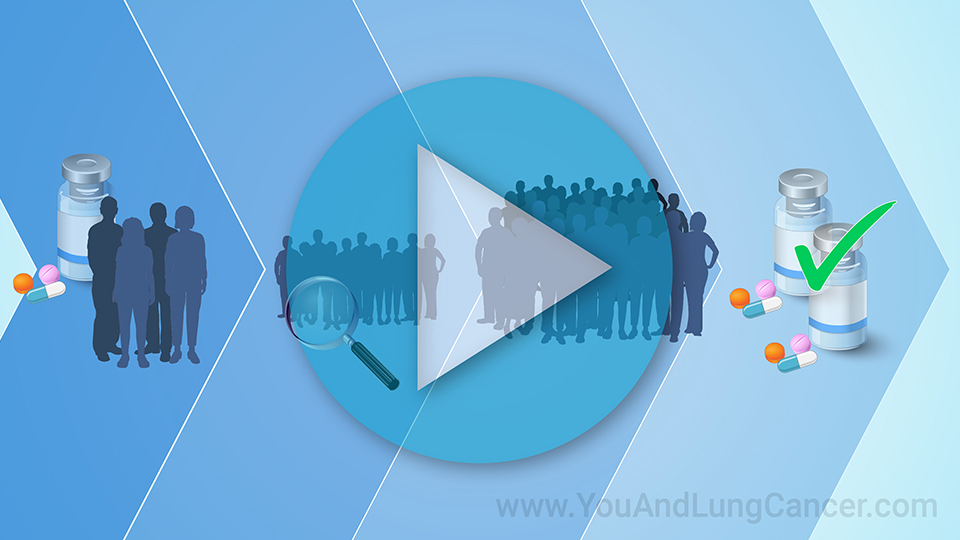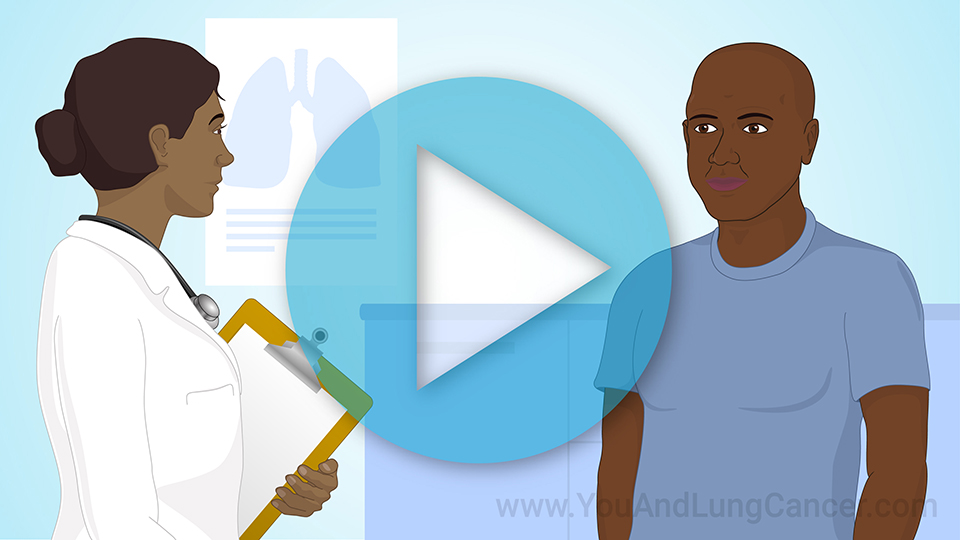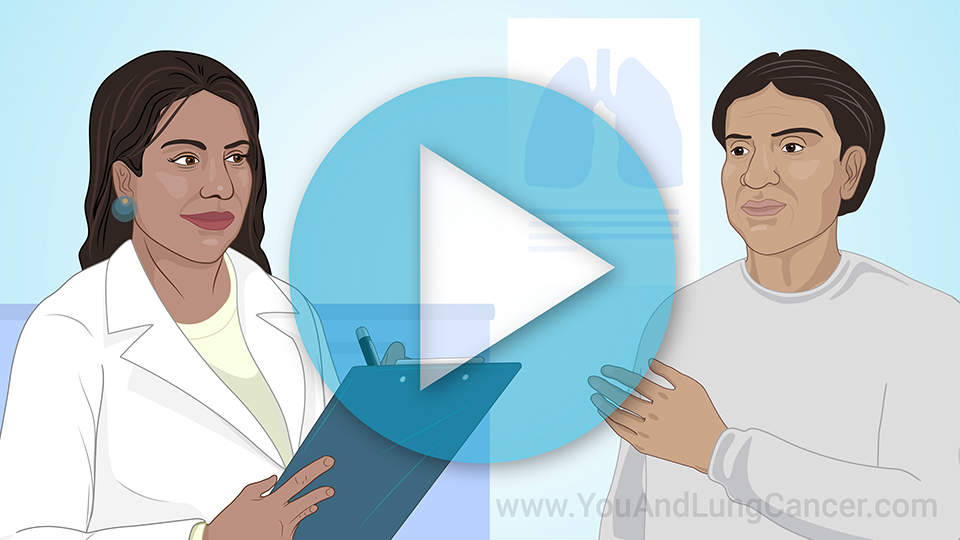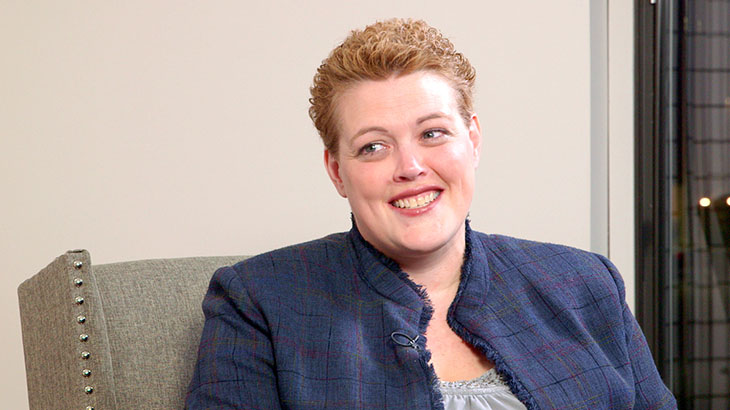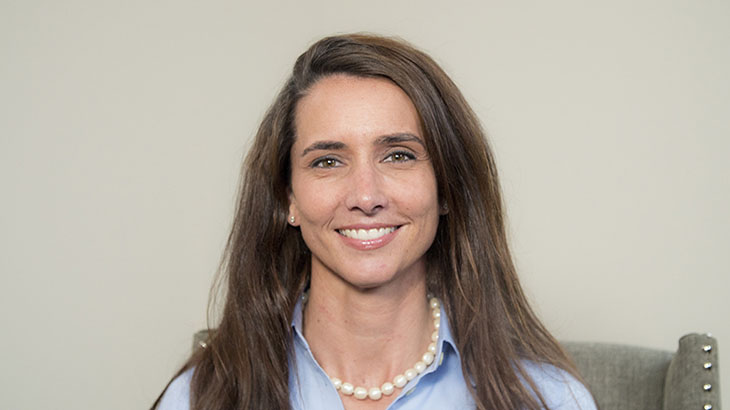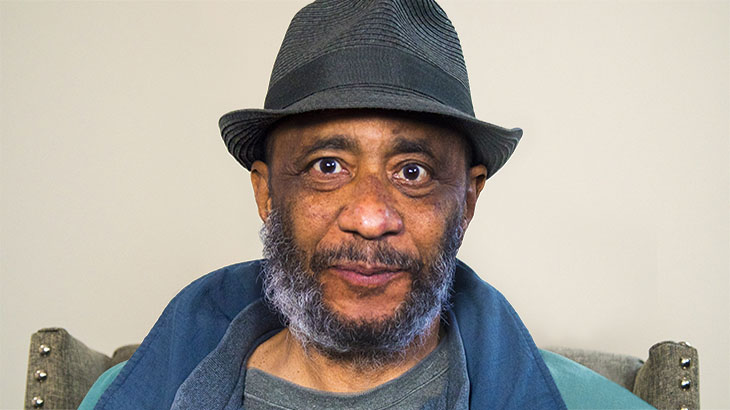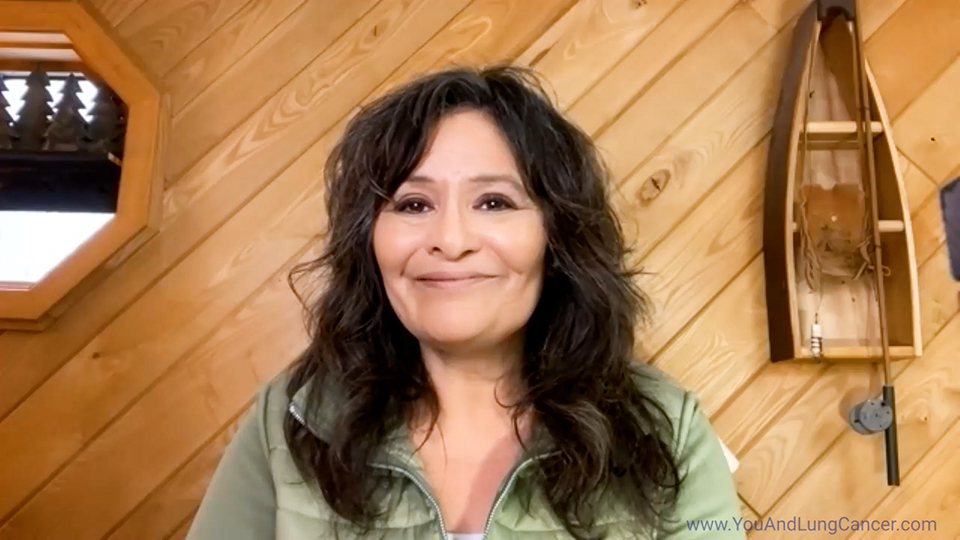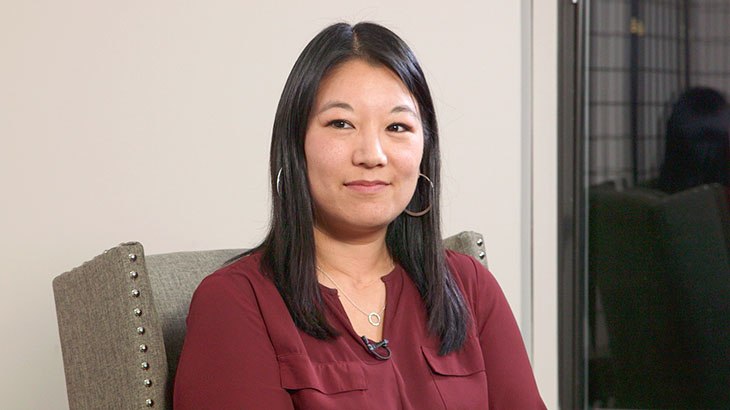Understanding Small Cell Lung Cancer
*Please note: This slide show represents a visual interpretation and is not intended to provide, nor substitute as, medical and/or clinical advice.
How do healthy lungs function?
When you inhale, the lungs transfer oxygen from the air to your blood. They also take carbon dioxide from your blood and get rid of it when you exhale.
What is lung cancer?
Lung cancer is a disease caused by the unchecked growth and spread of some cells in the lungs.
What is lung cancer?
In US adults, lung cancer is the second most common cancer and the most common cause of cancer deaths. Each year in the US, almost a quarter of a million people are diagnosed with lung cancerV and over 150,000 die of the disease.
What is small cell lung cancer (SCLC)?
SCLC is one of two major types of lung cancer. The other one is non-small cell lung cancer (NSCLC). The 2 most common subtypes of SCLC are:
- Small cell carcinoma (or oat cell cancer)—carcinoma is another word for cancer; and
- Combined small cell carcinoma
How common is SCLC?
SCLC is the second most common type of lung cancer.
SCLC affects about 1 of every 10 people with lung cancer.
What causes SCLC?
While there is no single cause of SCLC, it is highly linked to smoking.
Like most other adult cancers, SCLC is caused by a build-up of damage to cells. Over many years, this damage gives some cells the ability to grow, multiply, and spread out of control. The possible causes of this damage are called risk factors.
Will lung cancer spread?
If a cancer isn’t completely killed or removed, it can spread to other organs.
Will lung cancer spread?
A cancer that has spread to other organs is called a metastasis.
What is the most important risk factor for SCLC?
Cigarette smoking is the biggest risk factor for SCLC. The risk increases with the more years you have smoked and the more packs per day you smoke. A few people with SCLC have never smoked.
What are other risk factors for SCLC?
Other risk factors for SCLC are:
- Being exposed at home or work to:
- Secondhand smoke (breathing other’s smoke)
- Radon (a radioactive gas)
- Arsenic, asbestos, beryllium, cadmium, chromium, nickel, soot, or tar; and
- Prior radiation therapy to the breast or chest
Other risk factors can also include:
- Living where there is air pollution
- Having parents or siblings with lung cancer
- Having had other types of cancer like breast cancer, colon cancer, or prostate cancer
- Having had lung diseases like emphysema, chronic bronchitis, chronic obstructive pulmonary disease (or COPD), and tuberculosis; and
- Aging
What are the symptoms of SCLC?
The symptoms of SCLC are not specific. Possible symptoms are:
- A cough that won’t go away or gets worse
- Coughing up blood
- Rust-colored spit
- Chest pains that get worse if you take deep breaths, cough, or laugh
- Hoarse voice
Other symptoms include:
- Weight loss and loss of appetite
- Shortness of breath
- Feeling tired or weak
- A lung infection (such as bronchitis or pneumonia) that won’t go away or keeps coming back; and
- Wheezing with no known cause (like asthma)
Can lung cancer be prevented?
Researchers haven’t found any drugs, vitamins, herbal remedies, or alternative medicines that can help prevent lung cancer.
There are things you can do to lower your risk.
How can I reduce my risk of lung cancer?
The most important thing you can do to lower your risk of SCLC is: don’t smoke (cigarettes, cigars, and pipes)
Other things you can do:
- Avoid secondhand smoke; and
- Avoid radon and other chemicals that can cause cancer.
What factors increase survival?
Having a small cancer that hasn’t spread outside the lung increases survival.
What are my treatment options for SCLC?
The main ways to treat people with SCLC are:
- Radiation therapy; and
- Drug therapy
What determines my personal treatment for SCLC?
Which options are best for you will depend on factors like your:
- Tumor type, size, location, and spread
- Tumor biomarkers and other test results
- Symptoms
- Age and overall health; and
- Preferences
How do you decide on treatment for SCLC?
Your doctor will explain the recommended treatment options.
Make a plan together.
How do you decide on treatment for SCLC?
Ask lots of questions, for example:
- What are the goals of this treatment?; and
- What are its side effects)
When you meet with your doctor, be sure to:
- Explain your worries and wishes.
- Get a second opinion.
- Ask if there are any clinical trials you could join.
Can my cancer be cured?
Ask your doctor if your cancer can be cured.
New treatments have helped people with small cell lung cancer live longer than ever before.
This slide show explains how healthy lungs function and how small cell lung cancer can occur. Small cell lung cancer is one of two major types of lung cancer and it is the 2nd most common type of lung cancer in the US. This slide show explores what causes this type of cancer and what are its common risk factors. While cigarette smoking is the most significant risk factor, there are other risk factors and this disease can occur in those who have never smoked. If you or a someone you know have been diagnosed with this type of cancer, this slide show will help you know the kinds of questions you should ask when you meet with you doctor, including the goals of treatment and their possible benefits as well as the possible side effects.
-
Share with family and friends:
Click here to take our SURVEY
Your feedback is important to us! We will use your feedback to develop future areas of content about lung cancer which will help other patients, caregivers and families.
